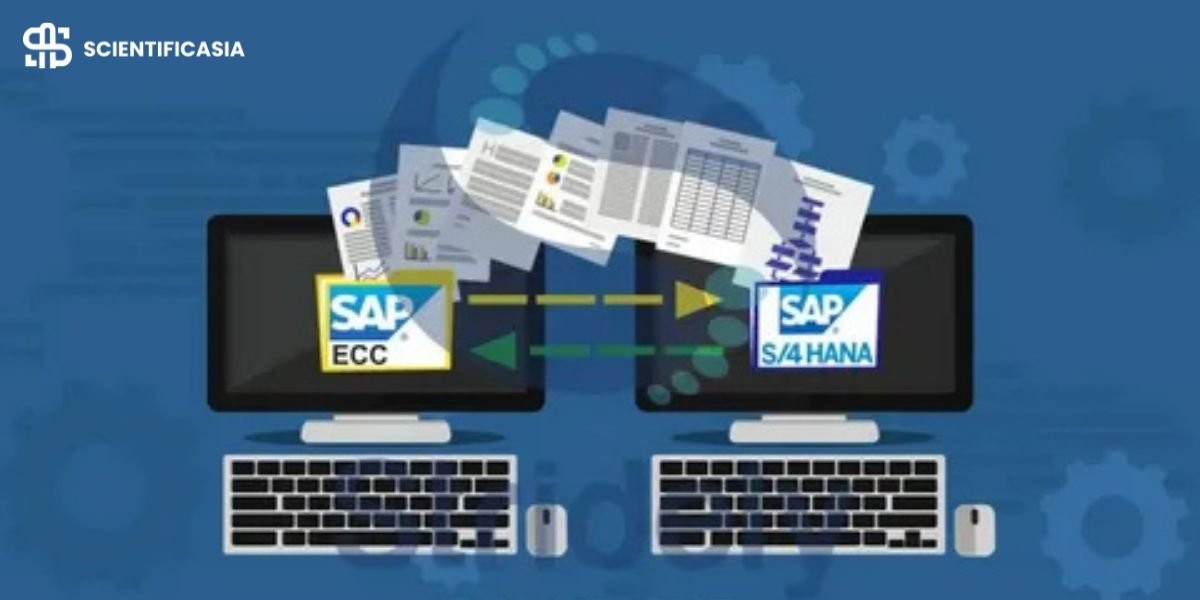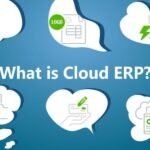Migrating from SAP ERP Central Component (ECC) to the next-generation SAP S/4HANA is a strategic imperative for many enterprises today. SAP released S/4HANA in 2015 as its flagship in-memory ERP platform. Despite a decade on the market, many companies still run on ECC, partly due to concerns about cost and disruption. However, the end of mainstream ECC support looms (December 2027, with optional extended support to 2030, and SAP is focusing all future innovations on S/4HANA. According to recent research, nearly half of SAP users are already live on S/4HANA or have started the migration, and another 30% plan to go live before 2027. The trend is clear: organizations are in a race to modernize their core ERP for real-time operations and digital transformation.
In this article, we delve into the business benefits and challenges of converting SAP ECC to S/4HANA, backed by current data and industry insights. We focus on value drivers like enhanced analytics, simplified data models, and process automation, as well as common obstacles such as data migration and change management. Throughout, we include practical insights and examples to help SAP consultants and business leaders assess the impact of an S/4HANA migration.
1. Why Migrate to SAP S/4HANA?
Business landscapes are evolving rapidly, and legacy ERP systems can hold organizations back. Compared to ECC, S/4HANA offers a radically simplified architecture and modern platform designed for today’s demands. This means analytics and reporting can run live against operational data without long batch processes or separate data warehouses. As Cloud4C explains, S/4HANA’s in-memory capabilities “lower total cost of ownership (TCO), improve application speed, and make it possible for newer applications to operate in a real-time environment”.
Features like integrated AI/ML, predictive analytics, and conversational interfaces are now part of the standard ERP suite. Organizations that upgrade can tap into these innovations more easily, for example, using embedded machine learning to detect anomalies in finance or supply chain without pulling data out of the system. In short, S/4HANA is designed to support a digital transformation roadmap (including cloud, IoT, and AI) in a way that ECC simply cannot.
With mainstream ECC maintenance ending in 2027 (and extended maintenance only until 2030), companies face increasing costs to stay on legacy software. Some customers have asked SAP for more time, and SAP has offered a limited “transition option” under RISE with SAP that extends the use of ECC up to 2033 for those committed to cloud transition. But this extension comes with a higher support fee, effectively encouraging customers to move to S/4HANA sooner rather than later.
In summary, the move to S/4HANA is driven by a combination of technological advantages (speed, analytics, simplicity) and business necessity (support deadlines, future innovation). The next sections detail the key benefits and challenges of this transition.
2.Key Business Benefits of SAP S/4HANA
Migrating to S/4HANA can unlock a wide range of business benefits. We summarize the most significant ones below, with examples and data points from recent studies.
- Real-Time Insights and Faster Decisions. S/4HANA’s in-memory engine enables real-time reporting across the enterprise. Leaders no longer have to wait for overnight or weekly reports – dashboards and analytics reflect up-to-the-minute data. This acceleration can be transformational: one industry report notes organizations achieving up to 50% faster month-end closings and reducing report generation times from hours to seconds after moving to S/4HANA. In practice, a finance manager can generate consolidated financial statements on the fly, or a sales director can pull live revenue and forecast figures without delay. Faster analytics translate into faster decision-making, giving companies an edge in responding to market changes and customer needs.
- Simplified Data Model and Process Efficiency. One of S/4HANA’s biggest technical changes is its dramatically simplified data model. Traditional ECC uses many aggregate and index tables to speed up reports, which adds redundancy and complexity. S/4HANA eliminates these extra tables by leveraging the HANA database—for example, all financial postings are now stored in one Universal Journal (table ACDOCA). This simplification has a real business impact: it reduces the effort and time needed for data reconciliation, cuts storage requirements, and makes system maintenance easier. Operations across the board become more efficient. For instance, manufacturing and supply chain teams can access integrated inventory and production data immediately, without waiting for overnight batch jobs to update aggregate tables. Tech leaders report that the streamlined data structures in S/4HANA “reduce the complexity of data management and the resources required to maintain system performance”.
- Higher Productivity through Automation. S/4HANA embeds more automation into standard processes. Routine tasks like invoice matching, cash application, or asset depreciation can be partially automated using machine learning and built-in workflows. As a result, many repetitive tasks that took hours in ECC now take minutes or seconds. For example, the same Tech leader’s analysis found that migration to S/4HANA often cuts operational manual work significantly, enabling up to 50% faster close cycles. Business processes from procure-to-pay to hire-to-retire benefit from this automation, freeing up employees to focus on exception handling and analysis rather than routine data entry.
- Enhanced User Experience (SAP Fiori). S/4HANA’s front-end is built around SAP Fiori, a modern, role-based user interface that works on desktops, tablets, and smartphones. Users get personalized, actionable dashboards and can work on the go. This modern UX leads to higher user satisfaction and productivity – for instance, warehouse staff can use Fiori apps on handheld devices to confirm deliveries in real time. A smooth user experience also makes organizational change easier; employees learn S/4 workflows faster than navigating the older ECC menus. (Many customers cite Fiori as a key benefit, though we don’t cite it directly here.)
- Integrated, End-to-End Processes. S/4HANA is designed as part of a connected SAP ecosystem. It uses a unified data model that makes integration with other SAP products (like SuccessFactors for HR, Ariba for procurement, Concur for travel/expenses, and S/4HANA Cloud applications) much simpler In practical terms, a customer’s order in S/4 can flow seamlessly into planning (SAP IBP) and finance without data gaps. Tech leaders highlight that S/4HANA “creates a truly connected enterprise where information flows seamlessly between departments and processes”. Moreover, S/4HANA integrates more easily with non-SAP solutions and with SAP’s Business Technology Platform (for analytics or IoT), enabling comprehensive digital initiatives. This tight integration accelerates projects like end-to-end Supply Chain planning or unified Customer 360 views, which are more cumbersome on standalone ECC systems.
- Cost Optimization and Cloud Flexibility. While the migration itself is a project cost, the long-term cost of ownership can improve with S/4HANA, especially if deployed on modern infrastructure. Moving S/4HANA to a private or public cloud often reduces capital expenditure on hardware and lowers maintenance overhead. Cloud-based S/4HANA (including SAP’s RISE offering) allows businesses to scale up computing power as needed, avoiding large upfront servers. Tech leaders notes that organizations often “report substantial cost reductions after migrating”, with savings in infrastructure, maintenance, and operational expenses offsetting much of the migration investment. In other words, S/4HANA can significantly lower TCO over time compared to keeping an old on-premise ECC instance.
- Improved Customer Engagement. By giving staff real-time data and better tools, S/4HANA indirectly improves the end-customer experience. For example, real-time order processing and advanced ATP (Available-to-Promise) ensure more accurate delivery dates and fewer backorders. Sales and service teams have a unified view of each customer (orders, returns, billing, support tickets), enabling faster and more personalized service. One report highlights that S/4HANA’s integrated customer data model and predictive analytics lead to “better service delivery and greater customer satisfaction”. In competitive markets, being able to respond to customer needs at a moment’s notice becomes a differentiator.
3. Challenges of Migrating from ECC to S/4HANA
Despite the clear benefits, the switch to S/4HANA is not without challenges. Enterprises must consider several hurdles that can complicate the migration. These include technical, financial, and organizational issues:
- High Project Cost and Complexity. Whether done as a system conversion (brownfield) or a fresh implementation (greenfield), it involves extensive planning, resources, and budget. Early in a project, business leaders often question the ROI: a recent CIO survey noted that many customers have “asked about the added business value” of S/4HANA and found “no satisfactory answer” yet. This uncertainty can stall decisions. Moreover, the migration may require buying new infrastructure or paying for cloud subscriptions. One must also consider license changes or upgrades, integration costs, and possible hiring of external consultants.
- Data Migration and Quality. Moving decades of transactional data from ECC to S/4HANA is a daunting task. Often, companies must first upgrade ECC to the latest enhancement pack and Unicode version before the S/4 conversion, effectively doing multiple upgrades in one project. Large data volumes risk slow transfer times or even unnoticed data loss. For example, missing historical records might only surface months later when an employee needs an old transaction. Ensuring accurate and clean data (through cleansing, validation, and testing) is critical, but it adds time to the project.
- Custom Code and Add-On Compatibility. Many ECC systems have extensive custom development (customer-specific programs, user exits, Z-tables) or industry add-ons. Some of this custom code will not run on S/4HANA without modification, because core data structures have changed. For instance, an old report that reads from an aggregate table may fail in S/4. Cloud4C warns that “exhaustive research” is needed to assess custom code, which could be the backbone of an organization’s processes. Each custom program must be analyzed: can it be replaced by a standard S/4 function? Rewritten? Phased out? This analysis can uncover unexpected work, especially if customizations touch critical flows like order processing or cost calculations.
- Integration Rework. Related to custom code is the issue of system interfaces. If ECC was integrated with many third-party systems (legacy warehouses, manufacturing execution, reporting tools, etc.), each interface needs revalidation in S/4HANA. Data formats and APIs may have changed. This work is often underestimated. In a large landscape, hundreds of interfaces might require updating or rebuilding.
- Business Process Redesign. S/4HANA sometimes changes how standard processes work (for example, new inventory valuation methods or simplified procurement screens). Business teams must review and possibly adapt their workflows. This can be disruptive: roles and procedures that were familiar under ECC may no longer apply. Thorough training and communication are necessary to align users with the new system. As one source notes, “Change can be challenging, especially for the estimated 60% of businesses that use legacy systems more than ten years old.” Convincing stakeholders (from department heads to end users) of the benefits and ensuring they buy into new processes is a significant change management effort.
- Dual Maintenance (“Landscape Split”). During the multi-month migration project, companies essentially have to support two parallel environments: the old ECC system and the new S/4HANA system. This means doing change requests or patches on both systems (“dual maintenance” in SAP terms) to avoid blocking business innovations. Cloud4C highlights this as a challenge: firms cannot stop running their day-to-day business while migration is in progress, so for a time they maintain both platforms concurrently. This adds operational overhead and coordination complexity.
- Skill Shortage. There is high demand and limited supply of skilled SAP S/4HANA consultants and architects. In-house teams that have managed ECC for years may lack S/4HANA experience. Cloud4C bluntly states that “many in-house teams may lack the skills required to effectively and efficiently perform a whole SAP migration project. ” Companies often must bring in outside expertise (consulting firms or managed service providers). The need for specialized skills (HANA database, Fiori development, data migration tools) can strain project budgets and timelines.
- Timing and Sequencing. Organizations face strategic decisions about when to migrate. Pushing it too late means rushing a risky project under deadline pressure (as mainstream support ends). Waiting too long may force extended support costs. Furthermore, ERP migrations tend to be multi-year endeavours for large companies; aligning them with other initiatives (like rolling out global templates or new product lines) is tricky. If the project drags on, the ECC environment itself requires patches and updates, adding work. As one analyst noted, many S/4HANA projects “are still stalled or have not even started” because companies wrestle with the scope and value proposition.
- Budget Overruns. Because the migration involves many variables, projects can go over budget. Unexpected issues—like deeper data cleanup than anticipated, or extensive re-coding—can inflate costs. Companies must budget not only for the initial migration but also for post-go-live stabilization and improvements.
In summary, S/4HANA migration is a major transformation project, blending IT overhaul with business process change. Common challenges include complex data conversion, reworking custom developments, managing costs, and handling organizational change. Careful planning, proof-of-concepts, and phased approaches are often needed to mitigate these risks.
4. Strategic Considerations and Trends
Given the significant effort involved, businesses should stay informed on current trends and SAP’s roadmap:
- Extended Deadlines and RISE Options. As noted, SAP has extended optional ECC support to 2030, and even introduced programs (like “SAP ERP, private edition” under RISE with SAP) that let customers continue ECC until 2033 if they commit to a cloud contract. This reprieve can give more time to plan a thoughtful migration, but comes at a premium. Enterprises should assess whether paying for extended support is worth delaying migration, versus moving earlier to avoid accumulating technical debt.
- Adoption Pathways (Brownfield vs Greenfield). Customers generally choose either a system conversion (keeping existing processes and data structures but converting ECC to S/4) or a new implementation (re-implementing business processes on a fresh S/4 system). Brownfield can preserve history and customizations, while greenfield allows process re-engineering. The right choice depends on company goals: firms seeking a “clean slate” often opt for greenfield (at the cost of re-implementing data and integrations), whereas those wanting to minimize disruption lean to brownfield.
- Cloud vs On-Premises S/4HANA. More organizations are running S/4HANA in private cloud or as part of RISE with SAP. The ASUG report notes a trend toward private cloud deployments and high interest in RISE (the managed cloud offering). Cloud S/4HANA (especially private edition) reduces in-house IT burden but also means moving to an OPEX subscription model. Businesses should weigh flexibility, control, and compliance needs. Even for on-premises customers, SAP now encourages a cloud-like mindset, with options to run HANA on AWS/Azure/Google or to use SAP’s data centres.
- Emerging Technologies and Ecosystem. SAP’s roadmap increasingly ties S/4HANA with advanced tech. For example, SAP emphasizes integration with its Business Technology Platform for embedded analytics and AI. Early adopters can experiment with AI-driven use cases (for instance, SAP’s Intelligent Robotic Process Automation). Being on S/4HANA opens doors to such innovations. Conversely, sticking with ECC means relying on older tools. SAP partners and consultants (including erproots.com community) often highlight intelligent automation as a future benefit of S/4HANA.
- Talent and Partner Ecosystem. As more companies migrate, competition for S/4HANA-skilled consultants is intense. Organizations may need to upskill existing staff in HANA and Fiori, or work with certified partners. Choosing a reliable implementation partner (or managed service provider) is critical – many businesses lack internal resources for a full migration.
- Industry-Specific Impact. Different sectors face unique challenges. For example, manufacturers may prioritize S/4HANA’s enhanced supply chain planning and manufacturing modules, while retail companies may focus on real-time inventory and order management. Understanding industry-specific roadmaps (such as SAP’s new solutions for discrete vs process industries) can help tailor the business case.
5. Benefits vs. Challenges: Making the Decision
Migrating to S/4HANA is fundamentally about balancing the rewards of modernization against the costs and risks of change. On one hand, the benefits are compelling: enterprises gain a platform that boosts efficiency, agility, and data-driven insights. Studies and case examples consistently show that companies experience tangible improvements—faster closing, better reporting, and more streamlined operations In the long run, these translate to competitive advantage: faster time-to-market for products, higher customer satisfaction, and the ability to harness new digital business models.
On the other hand, the challenges are real. A poorly planned migration can lead to budget overruns, business disruption, or unmet expectations. To mitigate this, best practices have emerged: thorough preparation (including a clear business case and pilot projects), data cleansing upfront, modular deployment (phased rollouts by function or region), and strong change management. It’s also wise to leverage SAP’s tools like the SAP Readiness Check and data migration tools early on.
The focus should be on outcomes: for example, demonstrating how real-time inventory visibility can reduce stockouts, or how predictive analytics can lower working capital needs. Including end-users and business stakeholders in the planning helps build consensus and uncover hidden requirements.
Ultimately, delaying the migration has its own cost: higher maintenance fees and a growing gap between ECC and SAP’s innovation front.
Conclusion
The transition from SAP ECC to S/4HANA is a major strategic decision with wide-ranging implications. When done correctly, it yields clear business benefits: accelerated analytics, simpler operations, empowered users, and a solid foundation for innovation. Enterprises can expect better decision support, streamlined processes, and lower long-term costs. However, the journey requires careful planning to overcome significant challenges, from data migration and custom code conversion to change management and budget control.
For SAP consultants and business leaders, the key is to build a strong business case that ties S/4HANA’s capabilities to strategic objectives (such as digitization, customer experience, and efficiency gains). By highlighting both the quantitative gains (like 50% faster close cycles and TCO savings) and the qualitative advantages (such as real-time decision-making and readiness for AI), you can make a compelling argument for the migration. At the same time, acknowledge the complexities and plan mitigation strategies accordingly.
In today’s ERP landscape, staying on ECC beyond 2027 is increasingly untenable. Moving to S/4HANA positions a company for future growth and agility, leveraging SAP’s most advanced ERP innovation. The path is challenging, but with the right preparation and support, the rewards of a modern, intelligent ERP platform can far outweigh the costs of migration.
















